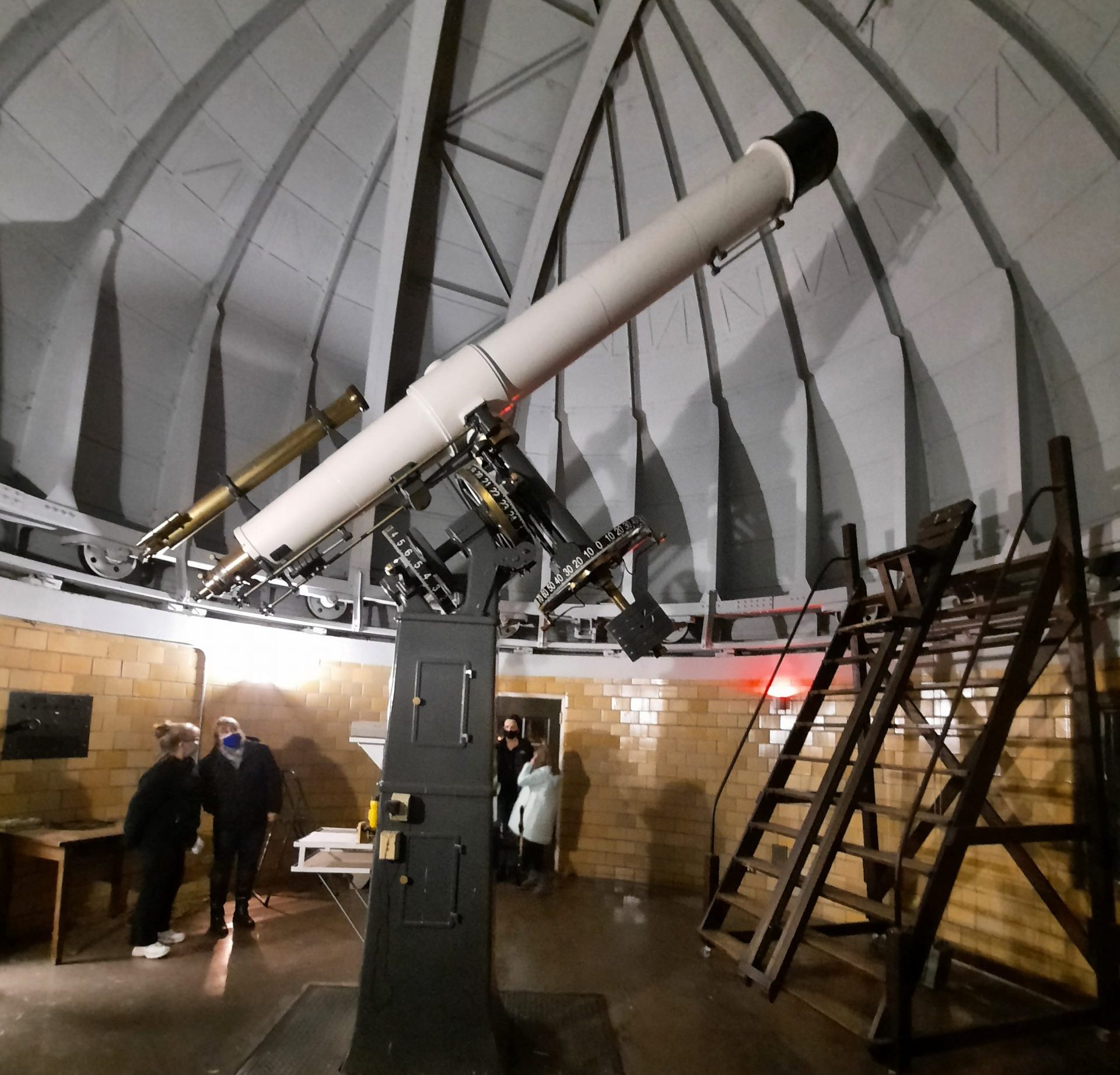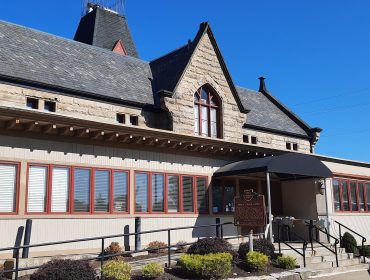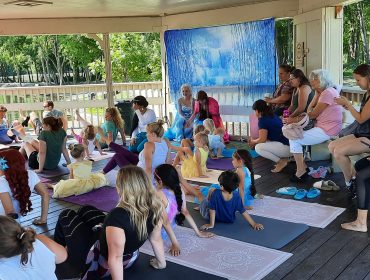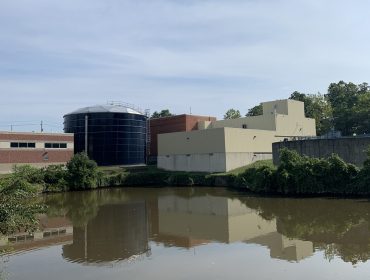
The Burrell Observatory was built in 1940 and named after telescope designer, Dr. Edward P. Burrell. It is located on the Baldwin Wallace campus and is accessible to students and the public as well.
Observatory director, Gary Kader, organizes several events such as lectures on various astronomy topics, which are hosted at the Kleist Center for Art and Drama. After the lectures, guests are invited to take advantage of the open houses at the Burrell Observatory. The experience is like taking a trip back in time when telescopes were operated manually, and users had to rely on star charts and coordinates to aim the scope. Furthermore, the refractor telescope measures 13 3/8 inches in diameter, which makes it the second-largest refractor throughout the state of Ohio. Just seeing the impressive telescope with all its beautiful brass knobs and cranks is well worth the time, but guests also have the opportunity to take a peek through the lens if the skies are clear.
The most recent event was “Into the Crucible: The Next Era of Venus Surface Exploration” on February 11, 2022. Dr. Jeffrey A. Balcerski, senior researcher at the Ohio Aerospace Institute, spoke of the difficulties and the advancements regarding the research and explorations of Venus’s surface and atmosphere.
Balcerski explained that spacecrafts and rovers are unable to survive the extremely “hostile conditions” of Venus’s atmosphere. Therefore, those that have successfully landed on the surface have only been able to operate for very short amounts of time, limiting the data collection process. These complications led to a new vision, and the Glenn Extreme Environment Rig (or GEER) was created to simulate Venus’s surface and conditions. The data collected from GEER will help scientists understand how to engineer a vessel that will be able to withstand Venus’s volatile atmosphere and enable more in-depth exploration.
Balcerski also addressed the question of whether there could be life on Venus and spoke of the discovery of basalt-like rocks and of phosphorus on the planet. But perhaps even more mysterious is the black bands that are visible, but seemingly undetectable to spectrometry. What are these black bands? Perhaps GEER and future NASA missions to Venus will help answer these questions in the future. Balcerski says,
“I think we will find things that we never imagined. We won’t find trees. We won’t find oceans. We won’t find life on Venus by overturning every rock like we’re doing on Mars. If there is life on Venus, it’s probably in the clouds."
Don’t miss the next lecture and open house, which is scheduled for April 1, 2022 at 7:30 pm. That evening’s topic will be “The Time is Now: Beginning the Search for Life Outside Our Solar System” with guest speaker, Dr. Scott Gaudi. Tickets to these events are free (though donations are welcome) and can be acquired by visiting www.bw.edu/tickets or dialing (440) 826-2240.
Another event you won’t want to miss is “The Hertzsprung-Russell Diagram: The Rosetta Stone of Steller Astronomy” on March 3, 2022 at 7 pm. The Cleveland Astronomical Society is hosting the online lecture, and BW’s very own Gary Kader will be the guest speaker. The Zoom link for this event can be found online at www.clevelandastronomical.org/meetings.html.
Related News
Strumming to Heal: How Guitars4Vets Cleveland Transforms Lives
Explore the Guitars4Vets Cleveland Chapter: A non-profit using music to help veterans heal from PTSD and rediscover joy.
Jim and Ellie Batt…A Journey of 70 years!
Berea couple, Jim and Ellie Batt, celebrate their 70th wedding anniversary. The couple moved to Berea in 1974.
“The Sting” is On the Air- BW’s Alternative Rock Station
Did you know Baldwin Wallace University has an alternative rock station? WBWC 88.3 FM"The Sting" . Check it out!
The Depot’s Railfan Fame- One of Berea’s Hidden Gems
The Berea Depot is one of the most popular train-spotting hotspots in the country for railfans. Check out what makes Berea Great.
Princesses Against Cancer Comes to Berea
Princesses Against Cancer, a non-profit established by 16-year-old Elizabeth Pino, helps lift spirits of children battling cancer
Exploring Berea’s Water Plant- Keeping Your Water Clean
Dr. Dimiter Ramadanoff Water Plant, located in Berea, has been in operation since 1898. Learn More about what this plant does.





